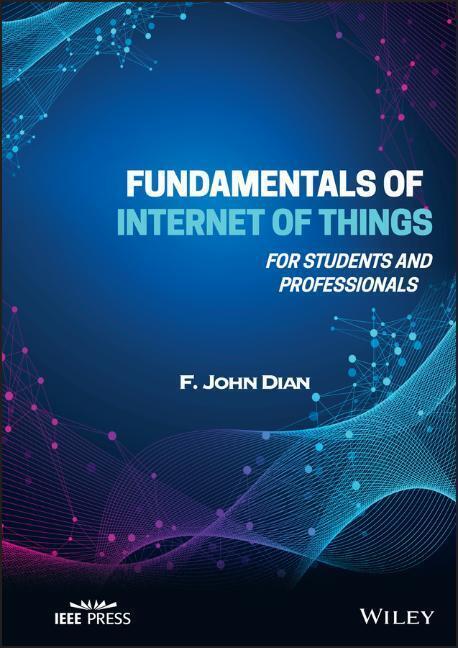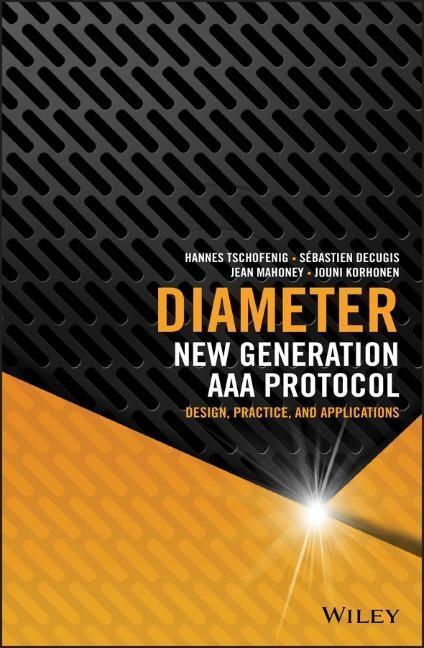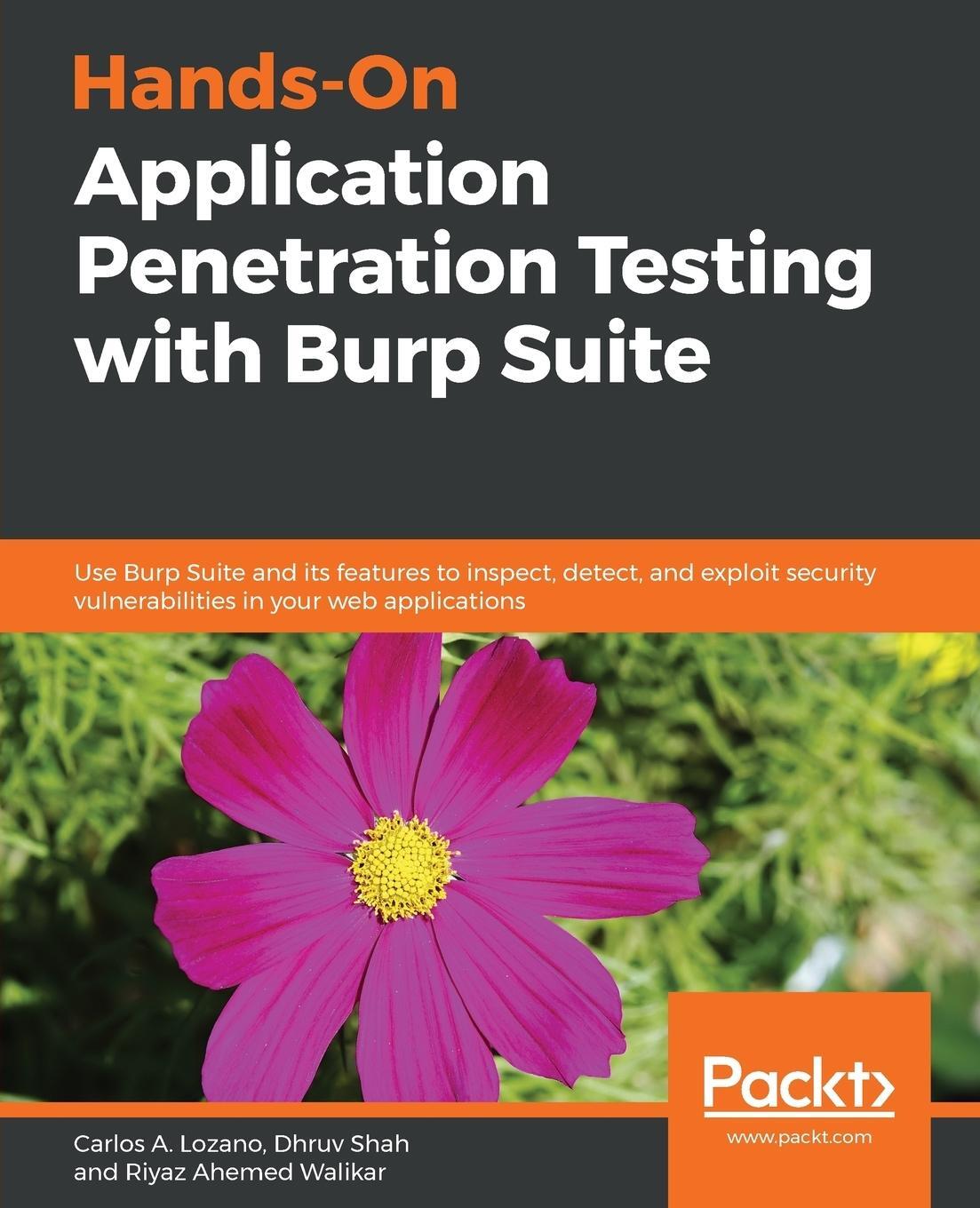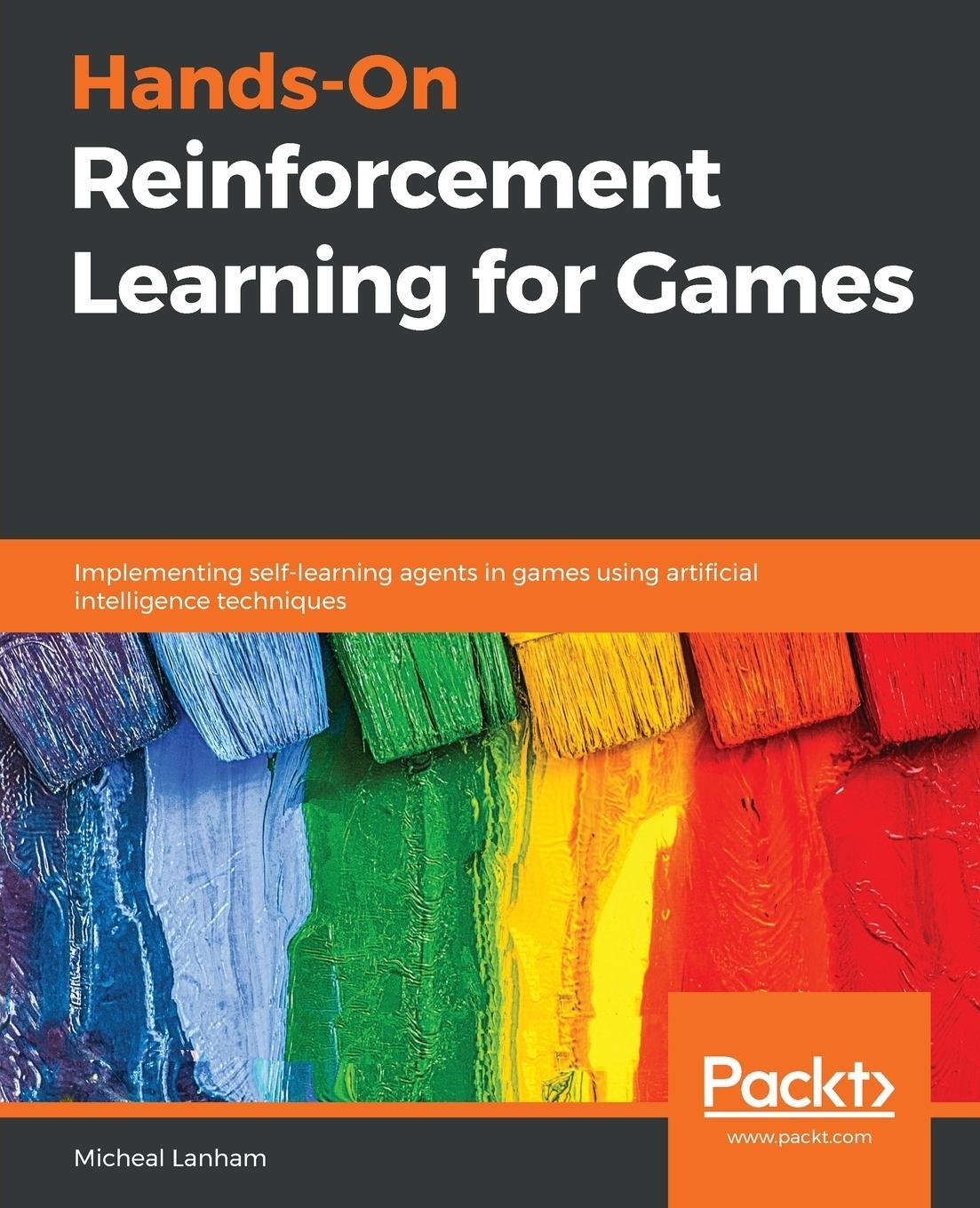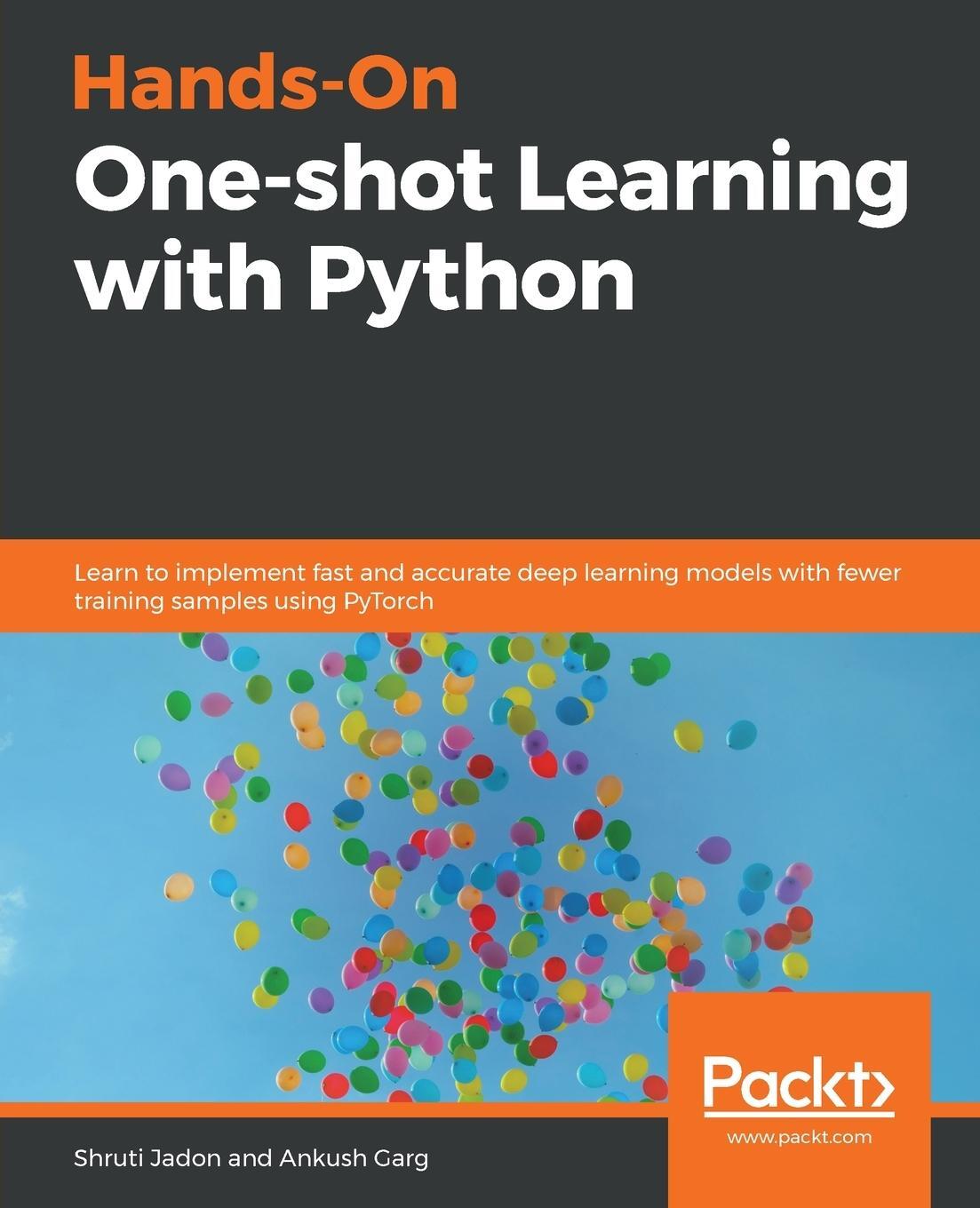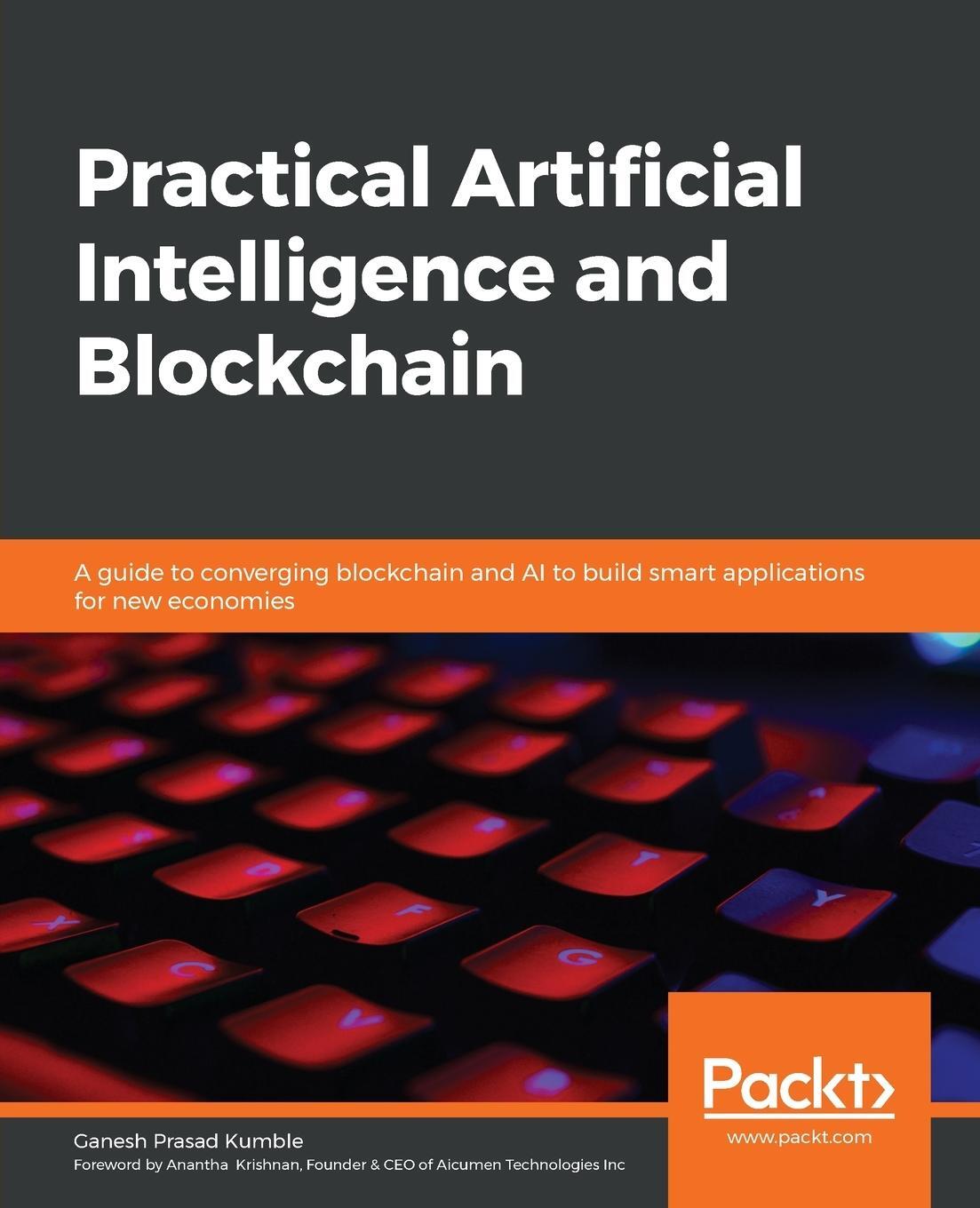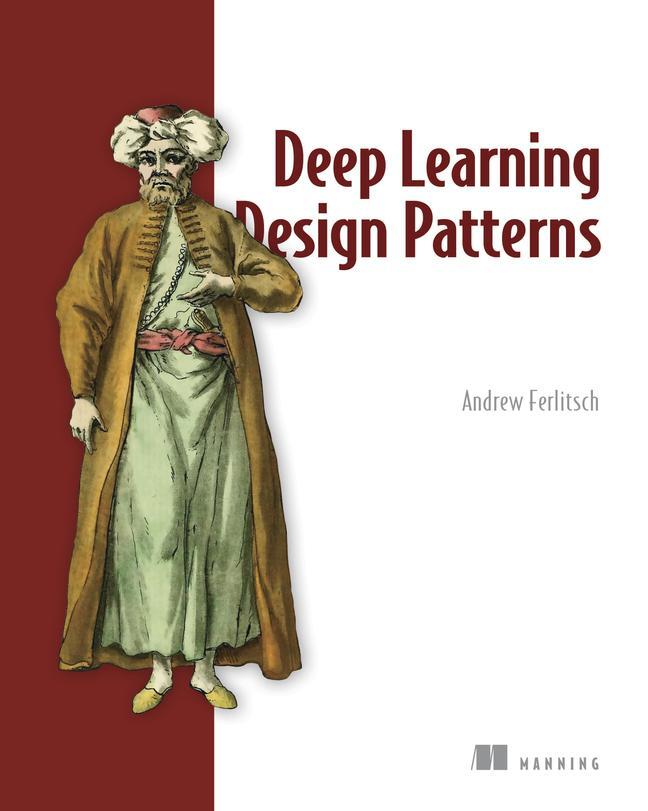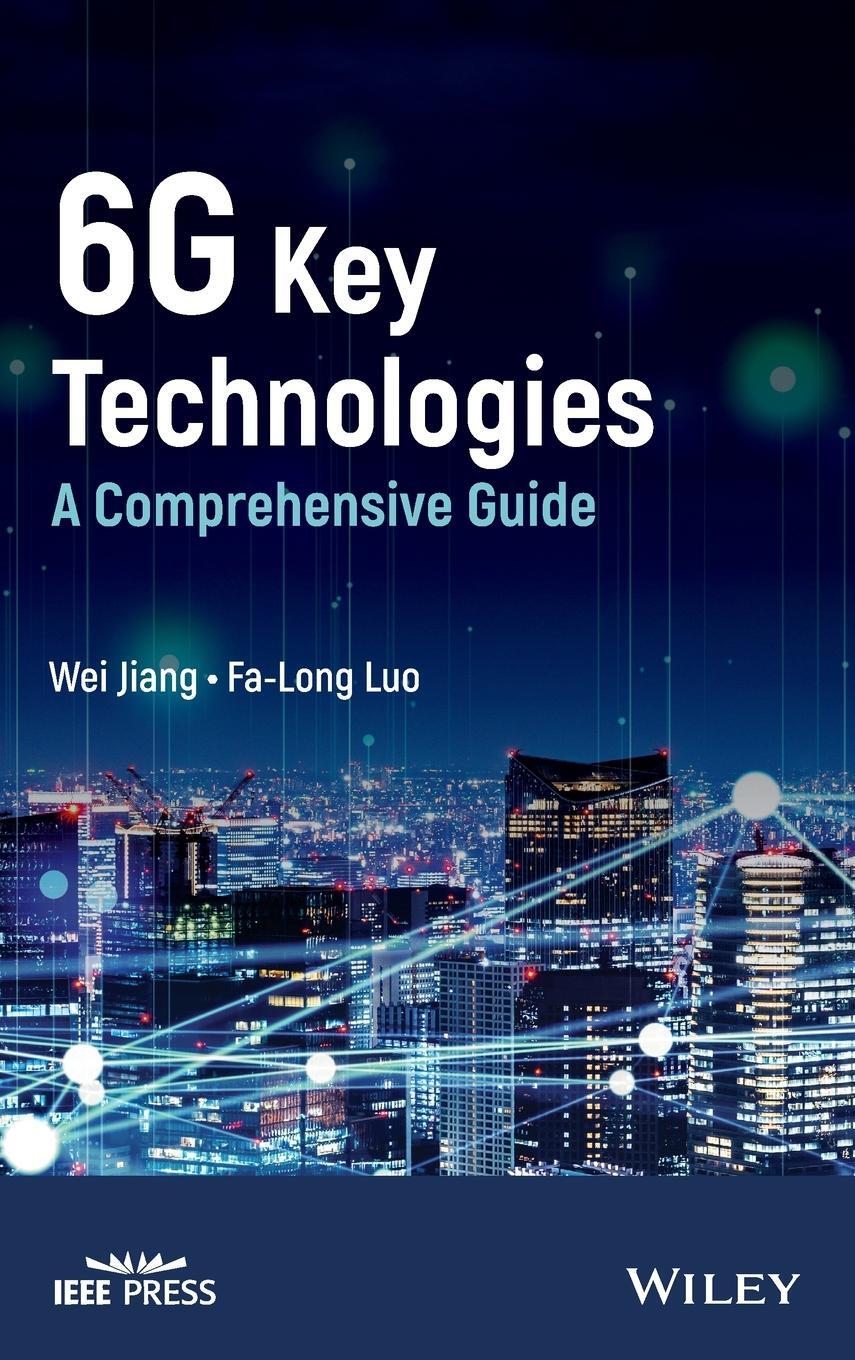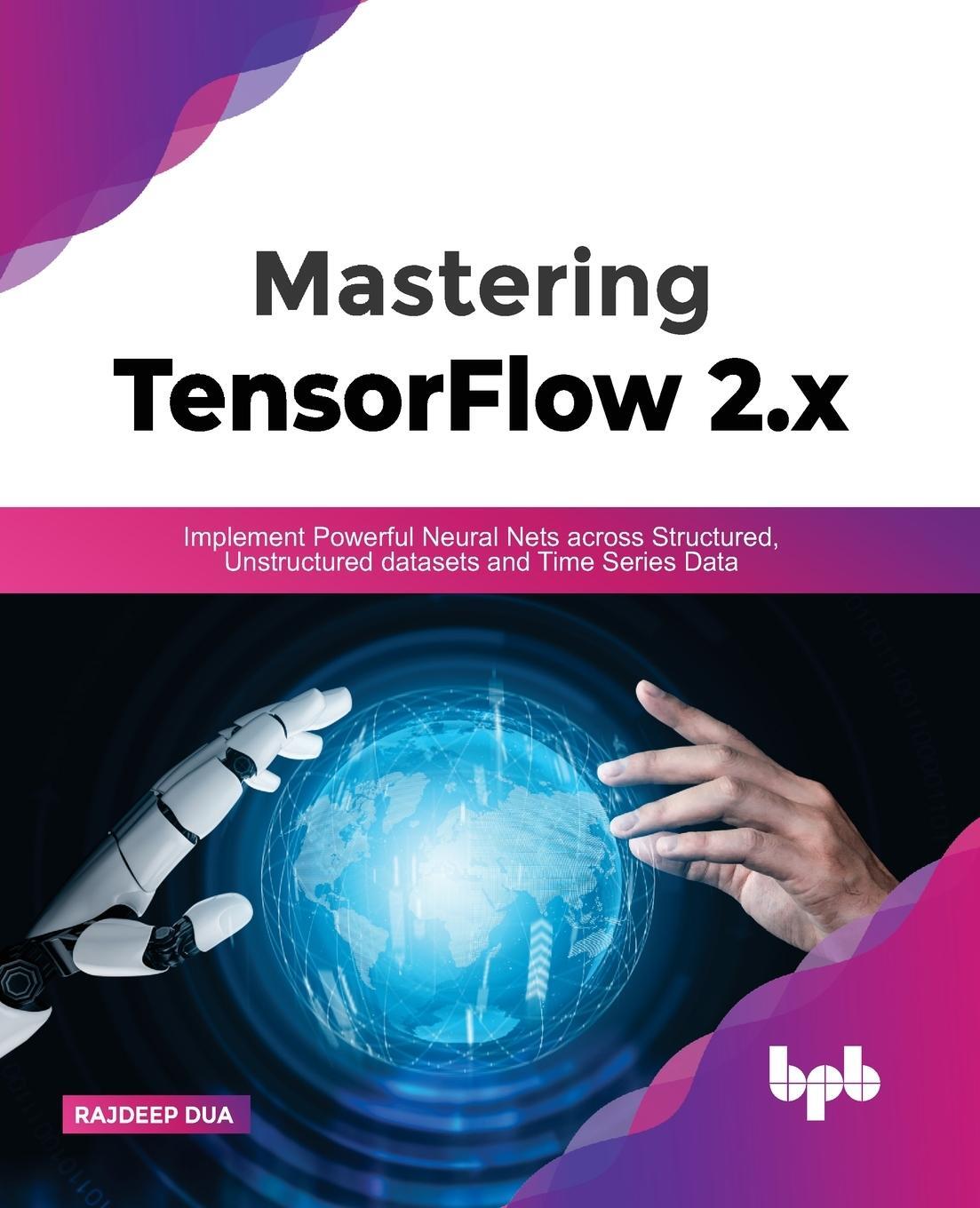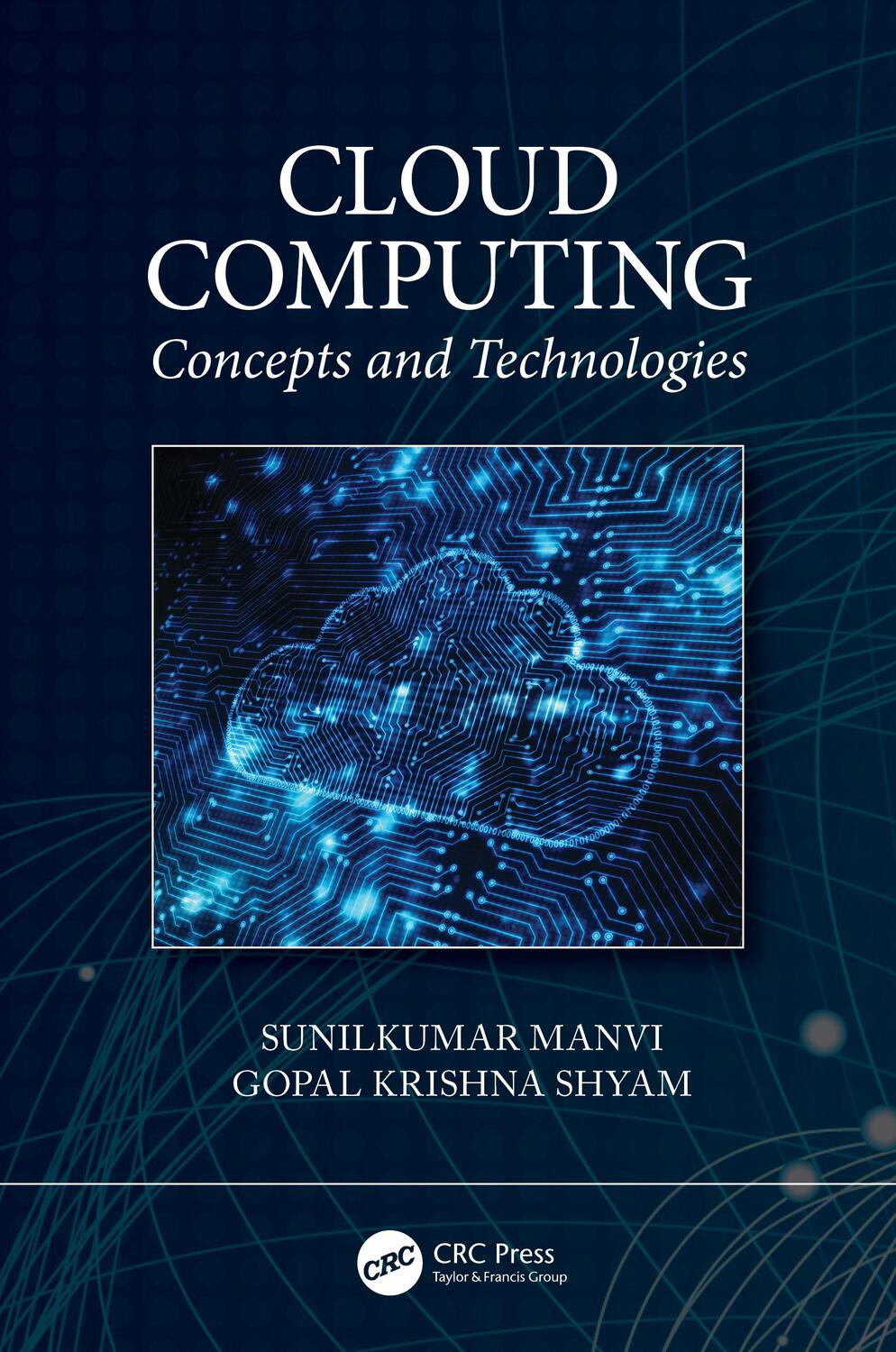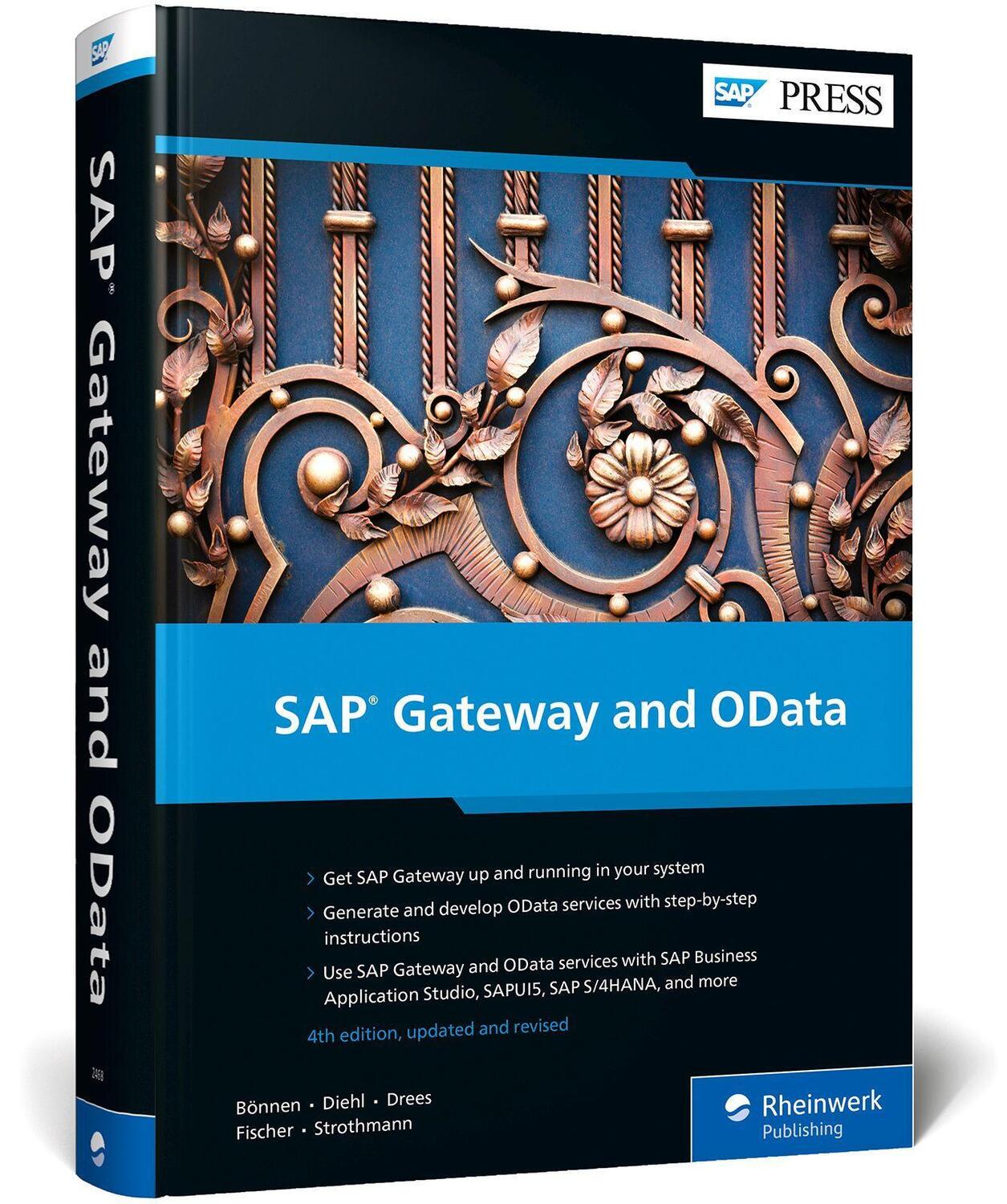Dekorationsartikel gehören nicht zum Leistungsumfang.
Sprache:
Englisch
115,00 €*
Versandkostenfrei per Post / DHL
Aktuell nicht verfügbar
Kategorien:
Beschreibung
FUNDAMENTALS OF INTERNET OF THINGS
Fundamentals of Internet of Things: For Students and Professionals teaches the principles of IoT systems. It employs a systematic approach to explain IoT architecture models and their layers. The textbook is arranged based on various layers of an architecture model. For readers who are unfamiliar with the concept of data communication and networks, the first chapter of this book covers the fundamentals of data communication and networks. It can also be used as review material for those who are already familiar with the concept.
The book begins with many examples of IoT use cases to show readers how IoT can be applied to various IoT verticals. The concept of smart sensors is then described, as well as their applications in the IoT ecosystem. Because internet connectivity is an essential part of any IoT system, the book explores wired and wireless connectivity schemes including cellular IoT in the 4G and 5G eras. IoT protocols, analytics, as well as IoT security and privacy are important topics that are explained in this book with simple explanations. The last chapter of this book is dedicated to IoT solution development. IoT is one of the most rapidly evolving technologies today, and there is no better guide to this rapidly expanding sector than Fundamentals of Internet of Things (IoT) for Students and Professionals.
Features:
* Simple explanations of complex concepts
* More than 300 exercise problems and advanced exercise questions
* Provided solutions for the exercise problems
* 10 practical IoT projects
Fundamentals of Internet of Things: For Students and Professionals teaches the principles of IoT systems. It employs a systematic approach to explain IoT architecture models and their layers. The textbook is arranged based on various layers of an architecture model. For readers who are unfamiliar with the concept of data communication and networks, the first chapter of this book covers the fundamentals of data communication and networks. It can also be used as review material for those who are already familiar with the concept.
The book begins with many examples of IoT use cases to show readers how IoT can be applied to various IoT verticals. The concept of smart sensors is then described, as well as their applications in the IoT ecosystem. Because internet connectivity is an essential part of any IoT system, the book explores wired and wireless connectivity schemes including cellular IoT in the 4G and 5G eras. IoT protocols, analytics, as well as IoT security and privacy are important topics that are explained in this book with simple explanations. The last chapter of this book is dedicated to IoT solution development. IoT is one of the most rapidly evolving technologies today, and there is no better guide to this rapidly expanding sector than Fundamentals of Internet of Things (IoT) for Students and Professionals.
Features:
* Simple explanations of complex concepts
* More than 300 exercise problems and advanced exercise questions
* Provided solutions for the exercise problems
* 10 practical IoT projects
FUNDAMENTALS OF INTERNET OF THINGS
Fundamentals of Internet of Things: For Students and Professionals teaches the principles of IoT systems. It employs a systematic approach to explain IoT architecture models and their layers. The textbook is arranged based on various layers of an architecture model. For readers who are unfamiliar with the concept of data communication and networks, the first chapter of this book covers the fundamentals of data communication and networks. It can also be used as review material for those who are already familiar with the concept.
The book begins with many examples of IoT use cases to show readers how IoT can be applied to various IoT verticals. The concept of smart sensors is then described, as well as their applications in the IoT ecosystem. Because internet connectivity is an essential part of any IoT system, the book explores wired and wireless connectivity schemes including cellular IoT in the 4G and 5G eras. IoT protocols, analytics, as well as IoT security and privacy are important topics that are explained in this book with simple explanations. The last chapter of this book is dedicated to IoT solution development. IoT is one of the most rapidly evolving technologies today, and there is no better guide to this rapidly expanding sector than Fundamentals of Internet of Things (IoT) for Students and Professionals.
Features:
* Simple explanations of complex concepts
* More than 300 exercise problems and advanced exercise questions
* Provided solutions for the exercise problems
* 10 practical IoT projects
Fundamentals of Internet of Things: For Students and Professionals teaches the principles of IoT systems. It employs a systematic approach to explain IoT architecture models and their layers. The textbook is arranged based on various layers of an architecture model. For readers who are unfamiliar with the concept of data communication and networks, the first chapter of this book covers the fundamentals of data communication and networks. It can also be used as review material for those who are already familiar with the concept.
The book begins with many examples of IoT use cases to show readers how IoT can be applied to various IoT verticals. The concept of smart sensors is then described, as well as their applications in the IoT ecosystem. Because internet connectivity is an essential part of any IoT system, the book explores wired and wireless connectivity schemes including cellular IoT in the 4G and 5G eras. IoT protocols, analytics, as well as IoT security and privacy are important topics that are explained in this book with simple explanations. The last chapter of this book is dedicated to IoT solution development. IoT is one of the most rapidly evolving technologies today, and there is no better guide to this rapidly expanding sector than Fundamentals of Internet of Things (IoT) for Students and Professionals.
Features:
* Simple explanations of complex concepts
* More than 300 exercise problems and advanced exercise questions
* Provided solutions for the exercise problems
* 10 practical IoT projects
Inhaltsverzeichnis
About the Author xvii
Preface xix
1 Data Communications and Networks 1
1.1 Introduction 1
1.2 OSI Model 3
1.2.1 Layer 1 - Physical Layer 5
1.2.2 Layer 2 - Data Link Layer 5
1.2.2.1 Addressing 5
1.2.2.2 Framing 5
1.2.2.3 Error Control 6
1.2.2.4 Flow Control 6
1.2.2.5 Access Control 7
1.2.3 Layer 3 - Network Layer 7
1.2.4 Layer 4 - Transport Layer 7
1.2.4.1 Port Addressing 8
1.2.4.2 End-to-end Error Control 8
1.2.4.3 End-to-end Flow Control 8
1.2.4.4 Connection Control 8
1.2.4.5 Congestion Control 8
1.2.5 Layer 5 - Session Layer 9
1.2.6 Layer 6 - Presentation Layer 9
1.2.7 Layer 7 - Application Layer 9
1.3 Header Encapsulation 9
1.4 Layer 2 - Ethernet 10
1.4.1 Framing 11
1.4.2 Addressing 11
1.4.3 Error Control 11
1.4.4 Flow Control 12
1.4.5 Access Control 12
1.5 Layer 3 - IP 12
1.5.1 IPV4 and IPV6 headers 15
1.5.2 Improving IPV4 Address Assignments 17
1.6 Layer 4 - TCP and UDP 19
1.6.1 TCP Header 20
1.6.2 TCP Functionalities 22
1.6.2.1 Process-to-process Communication 22
1.6.2.2 Connection Control 22
1.6.2.3 Flow Control 22
1.6.2.4 Error Control 23
1.6.2.5 Congestion Control 24
1.6.3 UDP 24
1.7 TCP/IP Networking Model 25
1.8 Internetworking Devices 25
1.8.1 VLAN 27
1.8.2 Quality of Service (QoS) 28
1.9 Summary 29
References 30
Exercises 30
Advanced Exercises 32
2 Introduction to IoT 35
2.1 Introduction 35
2.2 IoT Traffic Model 36
2.3 IoT Connectivity 37
2.4 IoT Verticals, Use Cases, and Applications 39
2.5 IoT Value Chain 41
2.6 Examples of IoT Use Cases and Applications 42
2.6.1 IoT-based Structural Health Monitoring System 42
2.6.2 IoT-based Electric Meter 44
2.6.3 IoT-basedWaste Management System 44
2.6.4 IoT-based Earthquake Detection 45
2.6.5 IoT-based Car Software Update 45
2.6.6 IoT-based Mountain Climbing Information System 46
2.6.7 IoT-based Agriculture - Pest Management 46
2.6.8 IoT-basedWearable in Sports 47
2.6.9 IoT-based Healthcare System 47
2.6.10 IoT-based Augmented Reality (AR) System 48
2.6.11 IoT-based Food Supply Chain 49
2.6.12 Smart Grid System 49
2.7 IoT Project Implementation 51
2.8 IoT Standards 52
2.9 Summary 52
References 53
Exercises 53
Advanced Exercises 54
3 IoT Architecture 57
3.1 Introduction 57
3.2 Factors Affecting an IoT Architectural Model 58
3.3 IoT Architectural Model 59
3.4 IoT WF Architectural Model 59
3.5 Data Center and Cloud 63
3.6 Computing (Cloud, Fog, and Edge) 66
3.6.1 Cloud Computing 66
3.6.2 Fog Computing 67
3.6.3 Edge Computing 68
3.7 Summary 69
References 69
Exercises 69
Advanced Exercises 70
4 IoT Sensors 73
4.1 Introduction 73
4.2 Sensor and Its Performance Metrics 74
4.2.1 Static Performance Metrics 74
4.2.2 Dynamic Performance Metrics 76
4.2.3 Sensor Selection 77
4.3 Smart Sensors 80
4.4 MEMS 81
4.5 Sensor Fusion 83
4.5.1 Improving the Qu
Preface xix
1 Data Communications and Networks 1
1.1 Introduction 1
1.2 OSI Model 3
1.2.1 Layer 1 - Physical Layer 5
1.2.2 Layer 2 - Data Link Layer 5
1.2.2.1 Addressing 5
1.2.2.2 Framing 5
1.2.2.3 Error Control 6
1.2.2.4 Flow Control 6
1.2.2.5 Access Control 7
1.2.3 Layer 3 - Network Layer 7
1.2.4 Layer 4 - Transport Layer 7
1.2.4.1 Port Addressing 8
1.2.4.2 End-to-end Error Control 8
1.2.4.3 End-to-end Flow Control 8
1.2.4.4 Connection Control 8
1.2.4.5 Congestion Control 8
1.2.5 Layer 5 - Session Layer 9
1.2.6 Layer 6 - Presentation Layer 9
1.2.7 Layer 7 - Application Layer 9
1.3 Header Encapsulation 9
1.4 Layer 2 - Ethernet 10
1.4.1 Framing 11
1.4.2 Addressing 11
1.4.3 Error Control 11
1.4.4 Flow Control 12
1.4.5 Access Control 12
1.5 Layer 3 - IP 12
1.5.1 IPV4 and IPV6 headers 15
1.5.2 Improving IPV4 Address Assignments 17
1.6 Layer 4 - TCP and UDP 19
1.6.1 TCP Header 20
1.6.2 TCP Functionalities 22
1.6.2.1 Process-to-process Communication 22
1.6.2.2 Connection Control 22
1.6.2.3 Flow Control 22
1.6.2.4 Error Control 23
1.6.2.5 Congestion Control 24
1.6.3 UDP 24
1.7 TCP/IP Networking Model 25
1.8 Internetworking Devices 25
1.8.1 VLAN 27
1.8.2 Quality of Service (QoS) 28
1.9 Summary 29
References 30
Exercises 30
Advanced Exercises 32
2 Introduction to IoT 35
2.1 Introduction 35
2.2 IoT Traffic Model 36
2.3 IoT Connectivity 37
2.4 IoT Verticals, Use Cases, and Applications 39
2.5 IoT Value Chain 41
2.6 Examples of IoT Use Cases and Applications 42
2.6.1 IoT-based Structural Health Monitoring System 42
2.6.2 IoT-based Electric Meter 44
2.6.3 IoT-basedWaste Management System 44
2.6.4 IoT-based Earthquake Detection 45
2.6.5 IoT-based Car Software Update 45
2.6.6 IoT-based Mountain Climbing Information System 46
2.6.7 IoT-based Agriculture - Pest Management 46
2.6.8 IoT-basedWearable in Sports 47
2.6.9 IoT-based Healthcare System 47
2.6.10 IoT-based Augmented Reality (AR) System 48
2.6.11 IoT-based Food Supply Chain 49
2.6.12 Smart Grid System 49
2.7 IoT Project Implementation 51
2.8 IoT Standards 52
2.9 Summary 52
References 53
Exercises 53
Advanced Exercises 54
3 IoT Architecture 57
3.1 Introduction 57
3.2 Factors Affecting an IoT Architectural Model 58
3.3 IoT Architectural Model 59
3.4 IoT WF Architectural Model 59
3.5 Data Center and Cloud 63
3.6 Computing (Cloud, Fog, and Edge) 66
3.6.1 Cloud Computing 66
3.6.2 Fog Computing 67
3.6.3 Edge Computing 68
3.7 Summary 69
References 69
Exercises 69
Advanced Exercises 70
4 IoT Sensors 73
4.1 Introduction 73
4.2 Sensor and Its Performance Metrics 74
4.2.1 Static Performance Metrics 74
4.2.2 Dynamic Performance Metrics 76
4.2.3 Sensor Selection 77
4.3 Smart Sensors 80
4.4 MEMS 81
4.5 Sensor Fusion 83
4.5.1 Improving the Qu
Details
| Erscheinungsjahr: | 2022 |
|---|---|
| Fachbereich: | Nachrichtentechnik |
| Genre: | Technik |
| Rubrik: | Naturwissenschaften & Technik |
| Medium: | Buch |
| Seiten: | 432 |
| Inhalt: | 432 S. |
| ISBN-13: | 9781119847298 |
| ISBN-10: | 111984729X |
| Sprache: | Englisch |
| Herstellernummer: | 1W119847290 |
| Autor: | Dian, F. John |
| Auflage: | 1. Auflage |
| Hersteller: |
Wiley & Sons
Wiley-IEEE Press |
| Maße: | 254 x 178 x 22 mm |
| Von/Mit: | F. John Dian |
| Erscheinungsdatum: | 08.11.2022 |
| Gewicht: | 1,024 kg |
Inhaltsverzeichnis
About the Author xvii
Preface xix
1 Data Communications and Networks 1
1.1 Introduction 1
1.2 OSI Model 3
1.2.1 Layer 1 - Physical Layer 5
1.2.2 Layer 2 - Data Link Layer 5
1.2.2.1 Addressing 5
1.2.2.2 Framing 5
1.2.2.3 Error Control 6
1.2.2.4 Flow Control 6
1.2.2.5 Access Control 7
1.2.3 Layer 3 - Network Layer 7
1.2.4 Layer 4 - Transport Layer 7
1.2.4.1 Port Addressing 8
1.2.4.2 End-to-end Error Control 8
1.2.4.3 End-to-end Flow Control 8
1.2.4.4 Connection Control 8
1.2.4.5 Congestion Control 8
1.2.5 Layer 5 - Session Layer 9
1.2.6 Layer 6 - Presentation Layer 9
1.2.7 Layer 7 - Application Layer 9
1.3 Header Encapsulation 9
1.4 Layer 2 - Ethernet 10
1.4.1 Framing 11
1.4.2 Addressing 11
1.4.3 Error Control 11
1.4.4 Flow Control 12
1.4.5 Access Control 12
1.5 Layer 3 - IP 12
1.5.1 IPV4 and IPV6 headers 15
1.5.2 Improving IPV4 Address Assignments 17
1.6 Layer 4 - TCP and UDP 19
1.6.1 TCP Header 20
1.6.2 TCP Functionalities 22
1.6.2.1 Process-to-process Communication 22
1.6.2.2 Connection Control 22
1.6.2.3 Flow Control 22
1.6.2.4 Error Control 23
1.6.2.5 Congestion Control 24
1.6.3 UDP 24
1.7 TCP/IP Networking Model 25
1.8 Internetworking Devices 25
1.8.1 VLAN 27
1.8.2 Quality of Service (QoS) 28
1.9 Summary 29
References 30
Exercises 30
Advanced Exercises 32
2 Introduction to IoT 35
2.1 Introduction 35
2.2 IoT Traffic Model 36
2.3 IoT Connectivity 37
2.4 IoT Verticals, Use Cases, and Applications 39
2.5 IoT Value Chain 41
2.6 Examples of IoT Use Cases and Applications 42
2.6.1 IoT-based Structural Health Monitoring System 42
2.6.2 IoT-based Electric Meter 44
2.6.3 IoT-basedWaste Management System 44
2.6.4 IoT-based Earthquake Detection 45
2.6.5 IoT-based Car Software Update 45
2.6.6 IoT-based Mountain Climbing Information System 46
2.6.7 IoT-based Agriculture - Pest Management 46
2.6.8 IoT-basedWearable in Sports 47
2.6.9 IoT-based Healthcare System 47
2.6.10 IoT-based Augmented Reality (AR) System 48
2.6.11 IoT-based Food Supply Chain 49
2.6.12 Smart Grid System 49
2.7 IoT Project Implementation 51
2.8 IoT Standards 52
2.9 Summary 52
References 53
Exercises 53
Advanced Exercises 54
3 IoT Architecture 57
3.1 Introduction 57
3.2 Factors Affecting an IoT Architectural Model 58
3.3 IoT Architectural Model 59
3.4 IoT WF Architectural Model 59
3.5 Data Center and Cloud 63
3.6 Computing (Cloud, Fog, and Edge) 66
3.6.1 Cloud Computing 66
3.6.2 Fog Computing 67
3.6.3 Edge Computing 68
3.7 Summary 69
References 69
Exercises 69
Advanced Exercises 70
4 IoT Sensors 73
4.1 Introduction 73
4.2 Sensor and Its Performance Metrics 74
4.2.1 Static Performance Metrics 74
4.2.2 Dynamic Performance Metrics 76
4.2.3 Sensor Selection 77
4.3 Smart Sensors 80
4.4 MEMS 81
4.5 Sensor Fusion 83
4.5.1 Improving the Qu
Preface xix
1 Data Communications and Networks 1
1.1 Introduction 1
1.2 OSI Model 3
1.2.1 Layer 1 - Physical Layer 5
1.2.2 Layer 2 - Data Link Layer 5
1.2.2.1 Addressing 5
1.2.2.2 Framing 5
1.2.2.3 Error Control 6
1.2.2.4 Flow Control 6
1.2.2.5 Access Control 7
1.2.3 Layer 3 - Network Layer 7
1.2.4 Layer 4 - Transport Layer 7
1.2.4.1 Port Addressing 8
1.2.4.2 End-to-end Error Control 8
1.2.4.3 End-to-end Flow Control 8
1.2.4.4 Connection Control 8
1.2.4.5 Congestion Control 8
1.2.5 Layer 5 - Session Layer 9
1.2.6 Layer 6 - Presentation Layer 9
1.2.7 Layer 7 - Application Layer 9
1.3 Header Encapsulation 9
1.4 Layer 2 - Ethernet 10
1.4.1 Framing 11
1.4.2 Addressing 11
1.4.3 Error Control 11
1.4.4 Flow Control 12
1.4.5 Access Control 12
1.5 Layer 3 - IP 12
1.5.1 IPV4 and IPV6 headers 15
1.5.2 Improving IPV4 Address Assignments 17
1.6 Layer 4 - TCP and UDP 19
1.6.1 TCP Header 20
1.6.2 TCP Functionalities 22
1.6.2.1 Process-to-process Communication 22
1.6.2.2 Connection Control 22
1.6.2.3 Flow Control 22
1.6.2.4 Error Control 23
1.6.2.5 Congestion Control 24
1.6.3 UDP 24
1.7 TCP/IP Networking Model 25
1.8 Internetworking Devices 25
1.8.1 VLAN 27
1.8.2 Quality of Service (QoS) 28
1.9 Summary 29
References 30
Exercises 30
Advanced Exercises 32
2 Introduction to IoT 35
2.1 Introduction 35
2.2 IoT Traffic Model 36
2.3 IoT Connectivity 37
2.4 IoT Verticals, Use Cases, and Applications 39
2.5 IoT Value Chain 41
2.6 Examples of IoT Use Cases and Applications 42
2.6.1 IoT-based Structural Health Monitoring System 42
2.6.2 IoT-based Electric Meter 44
2.6.3 IoT-basedWaste Management System 44
2.6.4 IoT-based Earthquake Detection 45
2.6.5 IoT-based Car Software Update 45
2.6.6 IoT-based Mountain Climbing Information System 46
2.6.7 IoT-based Agriculture - Pest Management 46
2.6.8 IoT-basedWearable in Sports 47
2.6.9 IoT-based Healthcare System 47
2.6.10 IoT-based Augmented Reality (AR) System 48
2.6.11 IoT-based Food Supply Chain 49
2.6.12 Smart Grid System 49
2.7 IoT Project Implementation 51
2.8 IoT Standards 52
2.9 Summary 52
References 53
Exercises 53
Advanced Exercises 54
3 IoT Architecture 57
3.1 Introduction 57
3.2 Factors Affecting an IoT Architectural Model 58
3.3 IoT Architectural Model 59
3.4 IoT WF Architectural Model 59
3.5 Data Center and Cloud 63
3.6 Computing (Cloud, Fog, and Edge) 66
3.6.1 Cloud Computing 66
3.6.2 Fog Computing 67
3.6.3 Edge Computing 68
3.7 Summary 69
References 69
Exercises 69
Advanced Exercises 70
4 IoT Sensors 73
4.1 Introduction 73
4.2 Sensor and Its Performance Metrics 74
4.2.1 Static Performance Metrics 74
4.2.2 Dynamic Performance Metrics 76
4.2.3 Sensor Selection 77
4.3 Smart Sensors 80
4.4 MEMS 81
4.5 Sensor Fusion 83
4.5.1 Improving the Qu
Details
| Erscheinungsjahr: | 2022 |
|---|---|
| Fachbereich: | Nachrichtentechnik |
| Genre: | Technik |
| Rubrik: | Naturwissenschaften & Technik |
| Medium: | Buch |
| Seiten: | 432 |
| Inhalt: | 432 S. |
| ISBN-13: | 9781119847298 |
| ISBN-10: | 111984729X |
| Sprache: | Englisch |
| Herstellernummer: | 1W119847290 |
| Autor: | Dian, F. John |
| Auflage: | 1. Auflage |
| Hersteller: |
Wiley & Sons
Wiley-IEEE Press |
| Maße: | 254 x 178 x 22 mm |
| Von/Mit: | F. John Dian |
| Erscheinungsdatum: | 08.11.2022 |
| Gewicht: | 1,024 kg |
Warnhinweis

